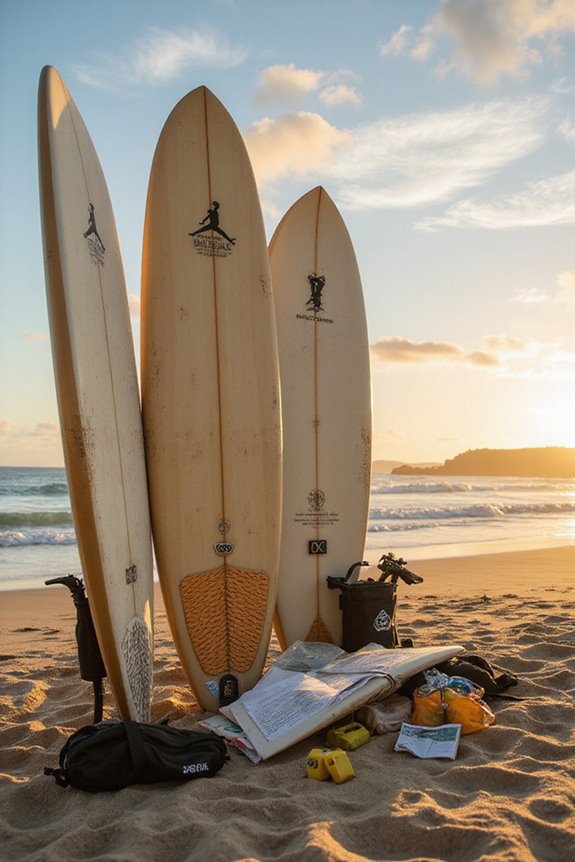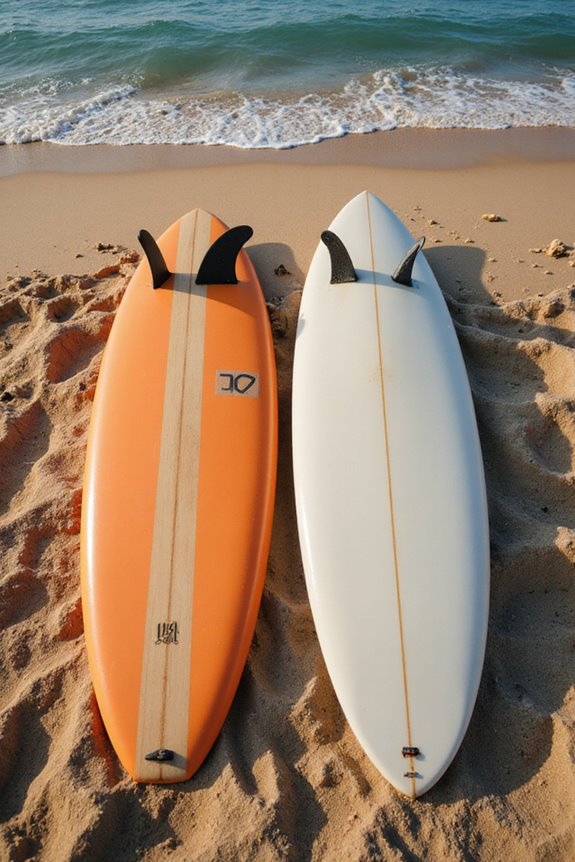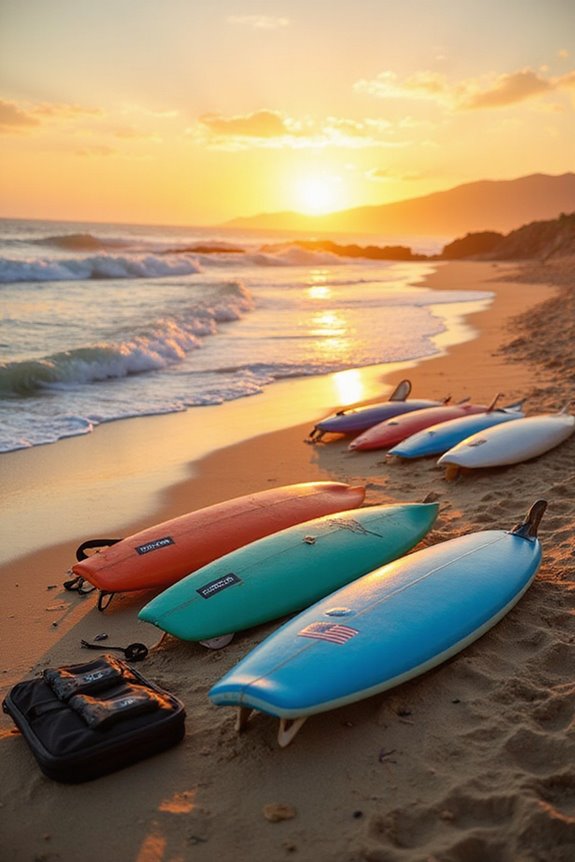To respect local surfers, we must understand their culture and traditions. We should observe lineup etiquette by respecting wave priority and taking turns. Communication is key, so let’s use clear signals and polite language when interacting. Prioritizing safety involves managing our boards effectively and practicing controlled wipeouts. Finally, we should support environmental preservation efforts to honor local coastlines. By doing these things, we build goodwill and enhance our surfing experience, leading to better interactions.
Key Takeaways
- Learn and follow local surf etiquette to show respect for established practices and community values.
- Acknowledge wave priority by yielding to surfers closest to the peak and avoiding “snaking” their waves.
- Communicate clearly with fellow surfers, using vocal cues and hand signals to indicate your intentions.
- Apologize if you make a mistake, such as dropping in on someone, to maintain goodwill in the lineup.
- Carry your board safely and be mindful of your surroundings to prevent accidents and ensure everyone’s safety.
Understanding Local Surf Culture
When we immerse ourselves in local surf culture, it’s important to recognize its deep historical and cultural roots. Local surf culture often emerges from rich traditions tied to indigenous or long-standing coastal communities. These communities have shaped surfing through oral histories, legends, and values such as resilience and respect for nature. Community rituals, like rites of passage, help newcomers earn their place and respect within the lineup. Elders, regarded as custodians of knowledge, pass down essential practices, including etiquette and environmental stewardship. Understanding local surf etiquette is crucial for fostering goodwill and harmony among surfers.
Observing Lineup Etiquette
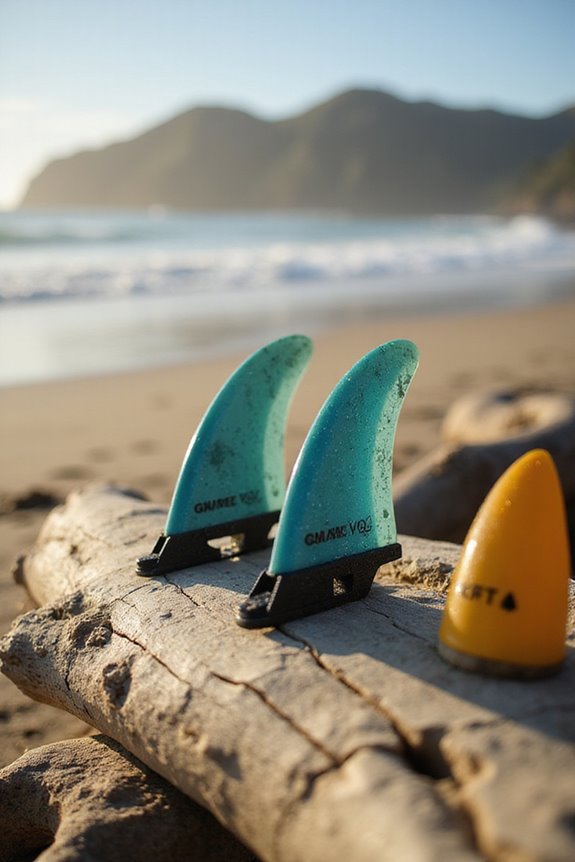
To maintain harmony and safety in the surf lineup, it’s essential for all surfers to adhere to specific etiquette rules. First, we must respect wave priority; the surfer closest to the peak has the right to catch the wave. Only one surfer should ride a wave at a time to prevent collisions.
We should also practice patient positioning. As we move in the lineup, it’s vital to paddle progressively closer to the peak only when the surfer ahead has taken their wave. Maintaining spatial awareness helps us avoid dropping in on others and guarantees that everyone has a fair chance. By consistently following these guidelines, we contribute to a respectful and enjoyable surfing experience for all. Additionally, using safety features such as leashes on your surfboard can enhance your ability to stay connected to your board while respecting the lineup.
Communicating Respectfully With Other Surfers
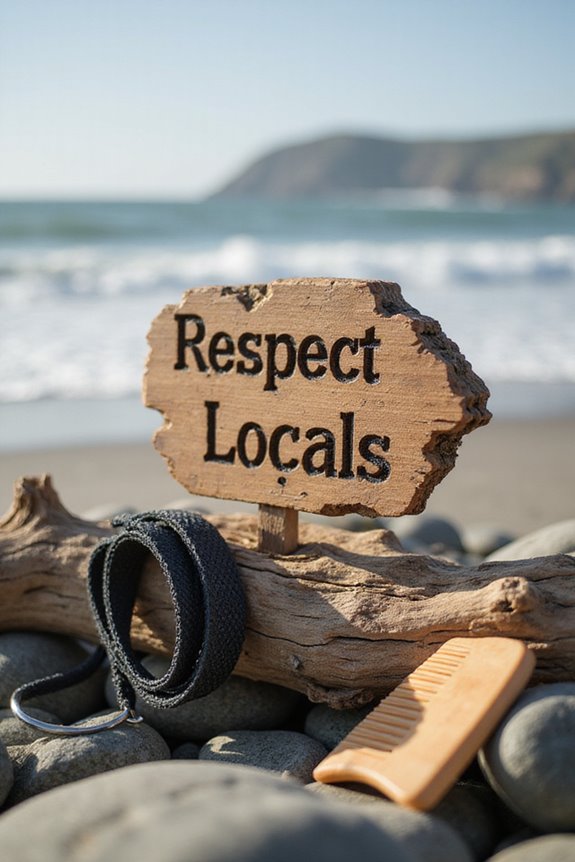
Effective communication is essential for maintaining safety and respect in the surf lineup, as it enables us to navigate the waves harmoniously. We should prioritize clear communication by vocalizing our intentions when paddling for a wave, using an authoritative tone to indicate our direction. It’s helpful to ask nearby surfers about their intended direction to avoid collisions.
Non-verbal cues, like hand signals and eye contact, can enhance our interactions. If we make a mistake, like dropping in on someone, acknowledging it and apologizing immediately helps maintain goodwill. By using polite and concise language, we can create an atmosphere of respectful interactions, which ultimately benefits everyone in the water. Additionally, understanding ocean dynamics is crucial for determining when to catch a wave, which can further promote safety and respect among surfers.
Prioritizing Safety and Board Control
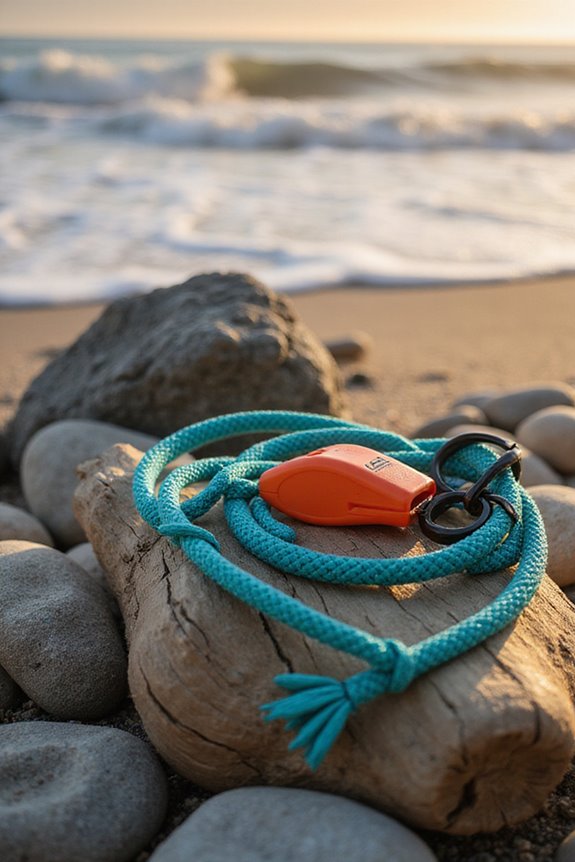
As we navigate the surf, ensuring safety and maintaining control of our boards is essential for a positive experience in the water. Proper board handling starts with carrying our boards on either side, avoiding injury, and holding them on the downwind side to reduce drag.
We must stay aware of our board’s position relative to waves and other surfers. Practicing effective wipeout techniques is crucial; we should jump away from our boards during falls and protect our heads to minimize injuries.
Additionally, using a secure leash helps keep our boards close, but we shouldn’t rely solely on it. Active control and awareness of our surroundings will enhance our safety and enjoyment in the surf. Wearing surf socks can also provide additional grip and protection against sharp objects in the water.
Recognizing and Following Priority Rules
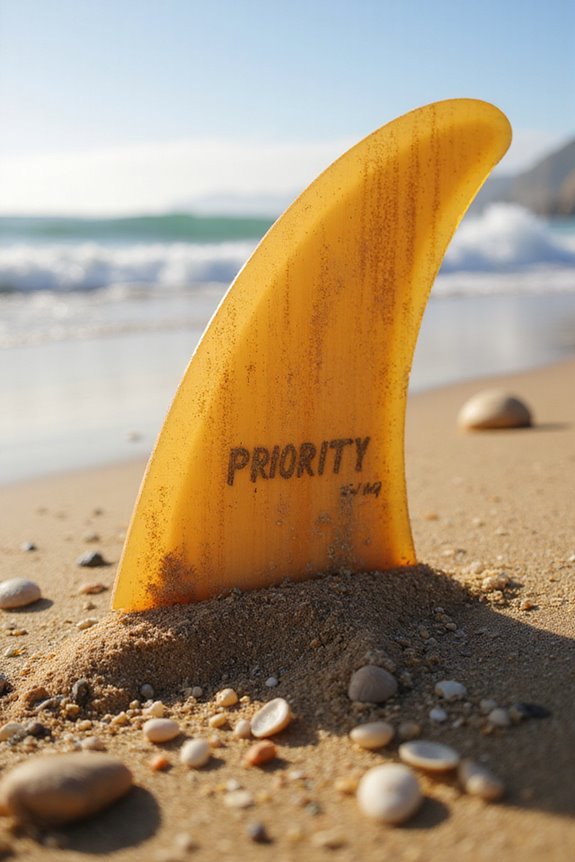
Recognizing and following priority rules is essential for maintaining harmony in the surf. Understanding priority etiquette helps guarantee fair wave sharing and reduces conflicts among surfers. The surfer closest to the breaking wave’s peak holds the right of way, while those already riding a wave have priority over paddlers.
To respect priority:
- Yield to surfers on the inside or already riding.
- Avoid “snaking” waves from those closer to the peak.
- Wait your turn; time spent in the lineup matters.
- Be aware of your position relative to others.
Additionally, being mindful of local surf culture can enhance your surfing experience and foster positive interactions with fellow surfers.
Engaging With Local Surfers
Engaging with local surfers is essential for fostering a positive atmosphere in the water, especially when we’re new to a spot. A simple smile, nod, or hello can go a long way in establishing friendly interactions. It’s important to avoid aggressive behavior and remain calm if conflicts arise.
We should take the time to learn about local surf etiquette by asking questions and observing others. Recognizing the hierarchy in the lineup is vital; we must wait our turn and respect more experienced surfers. Additionally, helping beginners or offering advice fosters community support and strengthens our connections. By engaging respectfully, we contribute to a welcoming environment that benefits everyone in the water. Understanding local surf etiquette can greatly enhance our surfing experience and interactions.
Supporting Environmental and Cultural Preservation
When we immerse ourselves in the surfing community, it’s essential to recognize our role in protecting the environment and cultural heritage surrounding our beloved surf spots. By adopting sustainable practices, we can help preserve critical ecosystems like mangroves and seagrasses that store significant carbon and support biodiversity.
To support ecosystem conservation, we should:
- Participate in community cleanups to reduce plastic pollution.
- Choose eco-friendly surf gear made from sustainable materials.
- Respect local regulations aimed at protecting habitats.
Frequently Asked Questions
What Should I Wear to Fit in With Local Surfers?
When we think about fitting in with local surfers, it’s about embracing surf culture while practicing beach etiquette. Let’s wear boardshorts, rashguards, and comfy sandals—styles that reflect our respect for the ocean and community.
How Do I Find Out About Local Surf Spots?
To find local surf spots, we can explore online forums and community maps that share surf etiquette, crowd levels, and conditions. Engaging with fellow surfers helps us discover hidden gems and understand the local culture better.
Are There Specific Times When Locals Prefer to Surf?
When it comes to surfing, we’ve noticed locals favor peak times like dawn and dusk for ideal conditions. Practicing good local etiquette means avoiding these hours to guarantee a more enjoyable experience for everyone.
Can I Bring Friends to Surf With Me at Local Spots?
When we bring friends to surf, we should remember our local customs and surf etiquette. For instance, introducing one friend at a time helps maintain harmony, making everyone feel welcome and respected in the lineup.
What if I Accidentally Drop in on a Local Surfer?
If we accidentally drop in on a local surfer, we should quickly offer a sincere apology and acknowledge our mistake. Respecting local etiquette helps rebuild trust and fosters a better surfing experience for everyone involved.

